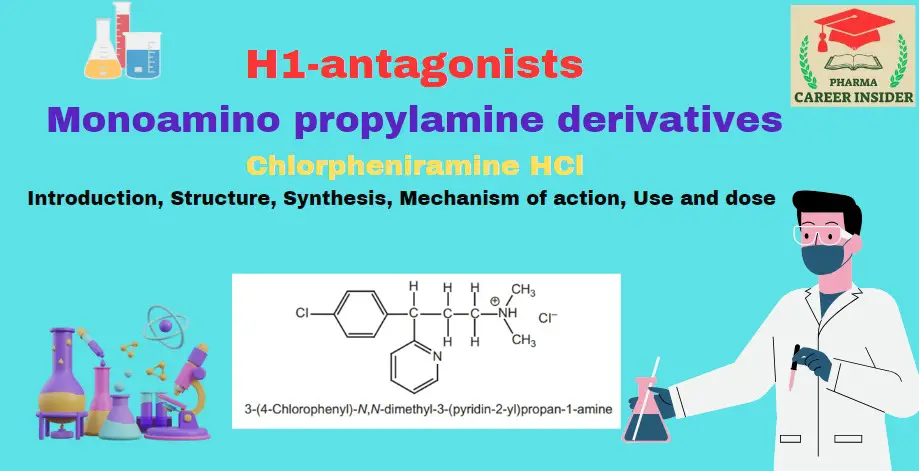Chlorpheniramine HCl is a widely used antihistamine renowned for its effectiveness in providing relief from symptoms associated with allergic reactions. Functioning as an antagonist at the H1 histamine receptors, it effectively mitigates manifestations such as itching, sneezing, and a runny nose. Commonly employed in treating allergic rhinitis, allergic conjunctivitis, and symptoms related to the common cold, chlorpheniramine HCl is readily available in various over-the-counter allergy medications.
Structure

Synthesis
Route-I. From: 2-(4-Chlorophenyl) acetonitrile

Route-II. From: Picolinaldehyde

Mechanism of action
Chlorpheniramine HCl is an antagonist at the H1 histamine receptors, effectively alleviating symptoms such as itching, sneezing, and a runny nose by blocking the effects of histamine.
Properties and uses:
Chlorpheniramine HCl is a white crystalline powder soluble in water and in ethanol. Chlorination of pheniramine in the para position of the phenyl ring increases potency by almost 10-fold, with no appreciable change in toxicity. Most of the antihistaminic activity resides with the dextro isomer.
Assay:
Dissolve the sample in anhydrous acetic acid and titrate against 0.1 M perchloric acid. Determine the end-point potentiometrically.
Dose:
The usual oral dose is 5 mg three or four times daily.
Dosage forms:
Chlorpheniramine maleate injection I.P., B.P., Chlorpheniramine maleate tablets I.P., B.P., Chlorpheniramine oral solution B.P.

